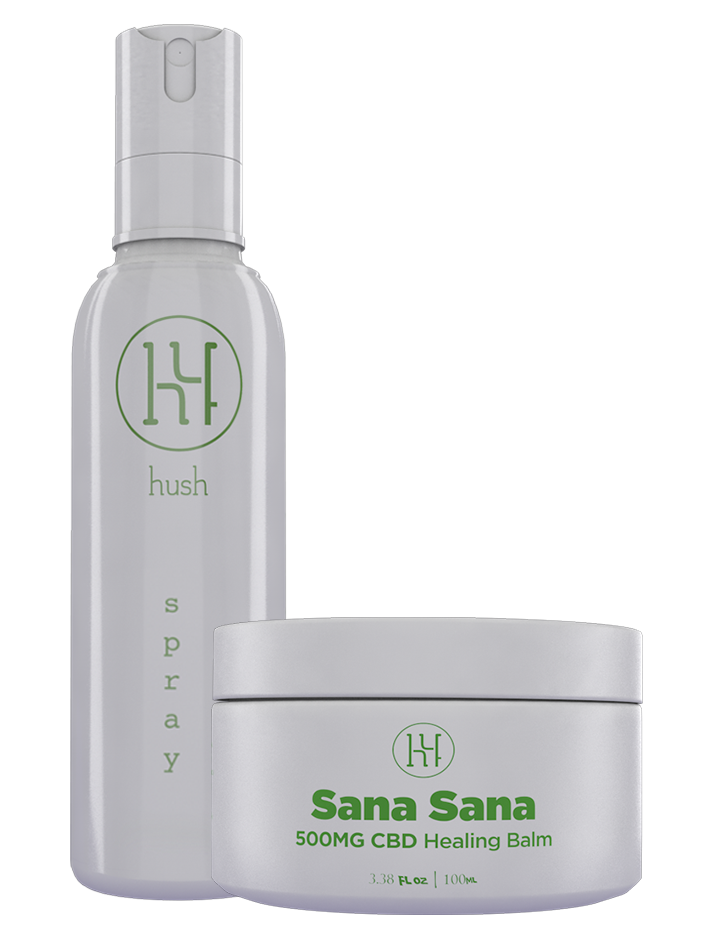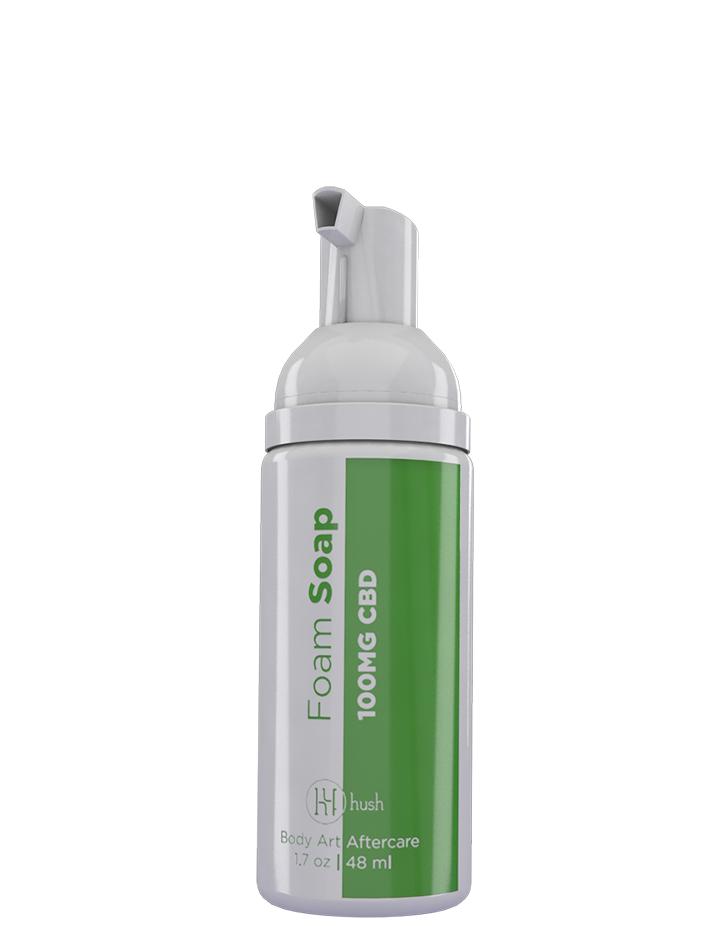What happens after the tattoo session? You’ve been poked a thousand times with tattoo needles and now you’re wondering, “What’s next?” How do you get from a fresh wound to a tattoo you can show off?
How long does a tattoo take to heal and how long until the rest of the world gets to see it? After a few weeks, your new tattoo may be ready for everyone to see, but it takes three to four months for your new body art to completely heal.
Let’s talk tattoo healing stages and what you need to know.
New Tattoo Day
You’re under the needle and your new tattoo is bleeding a bit. Good, that’s the first stage of healing! As blood rushes to the wound, it’s bringing nutrients your fresh tattoo will need to heal.
When your tattoo is finished and your tattoo artist bandages you up, your tattoo truly gets started with the healing. Your tattoo will keep bleeding for the first day and as it does, blood clots will form on the surface of your skin.
These blood clots may be mixed with excess tattoo ink, so if they look extra dark or weirdly colored, don’t stress! The clotting is slowing your bleeding and creating a barrier between your wound and the gritty outside world.
Second Day
Your tattoo artist will have provided aftercare instructions on when to take off your bandage and how best to clean, moisturize, and generally protect your tattoo. Your bandage will likely be pretty dirty with blood and excess tattoo ink by now, and you’ll want to take it off and throw it away. Do that ASAP!
Then carefully clean the wound of excess blood and ink by hand-washing your new tattoo with warm water and fragrance-free tattoo soap. Gently, very gently wash your tattoo.
If the scabs aren’t isn’t easily washing away, don’t rub them! That’s the good stuff that will help your tattoo heal well. Blood clots are already starting to form soft scabs to cover the puncture wounds and help protect your fresh ink.
Moisturize your clean tattoo with a lightweight, fragrance-free moisturizer and keep it out of the sunlight.
First Week
For the rest of the week, your tattoo will be working on growing those scabs. Your tattoo will be less wet with blood, ink, and plasma and start to dry out a bit. The dry skin might look like it's peeling or flaking off. Those scabs will start hardening as the skin below is working on mending itself. All good news.
You will keep gently washing your tattoo for the rest of this week. The important part will be to keep it lightly moisturized with a moisturizer that soothes and heals your wound. The scabbing and peeling skin may cause irritation, but don’t scratch! Soothe it with a nice healing balm instead.
Second Week
If the scabbing, peeling skin wasn’t hard before, by this time it should be. The skin that is coming off is natural. Your skin sheds dry, dead skin cells every day — you’re just noticing it more because it’s colored with the tattoo ink!
The skin with hardened scabs on it will most likely be giving you the itch by now. Don’t give in! Hit back with that tattoo healing balm we talked about — the one that’s going to heal it, soothe it, and moisturize it. Give it lots of love and maybe the itch will leave you alone. But if not, at least it’s healing, no?
Just make sure you don’t scratch. When you give in to the itch, it’s going to peel those scabs off and expose your tattoo to bacteria that could cause infection and impact the healing of your tattoo. Tis all a part of the healing process. Keep eyes for any signs of tattoo infection.
(Refresher on what your ink shouldn’t look like here!)
Third to Fourth Week
Your tattoo will have shed a lot of its scabs by now and it will be making its way towards being a closed wound. When your wound transitions from an open wound to a closed wound it means it’s closed on the surface level, but underneath, it’s continuing to heal.
You’ll know your wound is closed when the scabbing has come off on its own. This molting is your body’s way of telling you the skin underneath is ready to shine! But that will take a moment. The skin underneath will be a bit dull. It’s new and coming into its own, so give it a few more weeks. For now, you should be able to have at least a nice view of your tattoo.
Speaking of “view of your tattoo,” the sun will also now be able to see your tattoo and burn it! So go ahead and get some good SPF to protect your tattoo from those harmful UV rays and try to protect it from direct sunlight. Too much sun exposure is no bueno.
At this point, you should also be able to safely apply any other kind of moisturizer you usually use, but remember that your tattoo is still healing, so make sure your current moisturizers are really good for your skin.
Beyond the Fourth Week
You’re showing your new tattoo off, giving love to your artist for a job well done, and to yourself for healing so well, but look — it’s not over! The deeper layers of your skin are working hard to heal the layers of skin around the parts of your wound where the tattoo ink lies.
It takes about three to four months for your entire tattoo to heal. Your tattoo hasn’t entered its final form! While the deeper layers of skin are healing, your ink might look dull, you might still get the itch, and you will need to be thoughtful about what you put on your healing tattoo.
You should always take care of what you put on your tattoo and more so, your entire body! A lot of people tend to overlook the moisturizers that don’t go on their face.
Hold up now, because your body skin is just as important. It’s different, but it’s still important, especially if you want to take care of your tattoos and keep them looking vibrant for as long as possible! Invest a little and get yourself a nice body lotion that will also protect your tattoos.
Signs Your Tattoo Isn't Healing Well
You’re probably watching your new tattoo like a hawk, waiting for it to peel, flake, and settle into its forever home. What if something feels off? While some redness, itching, and light scabbing are normal for everyone, there are signs your tattoo might not be healing the way it should.
Lingering Redness
A little redness the first day or two is totally fine. If your skin stays fiery red, the redness starts to spread, or feels hot to the touch several days later, things are moving in the wrong direction. It could be a sign of infection.
Oozing or Discharge
Clear plasma or a bit of ink in your bandage is a normal part of the healing process. If your tattoo starts oozing thick yellow or green fluid, or it smells funky? That’s not supposed to happen. Call your doctor, then call your tattoo artist.
Swelling That Stays Puffy
Some swelling is expected, especially in areas like the ankles or hands. If the puffiness keeps getting worse or doesn’t go down after a few days, it’s worth checking in with a pro. This is sometimes the result of an ink allergy, and your artist may be able to spot the signs.
Scabs That Crack or Bleed
Light flaking is one thing. Thick, crusty scabs that split open and bleed are not part of the normal healing itinerary. They could damage your ink and open you up to infection.
Itchy Rash or Bumps
Some itchiness is normal, especially when you enter the peeling phase. It's normal for the itching to reach a brief point where it drives you absolutely crazy. A rash or small pimples accompanying the itch might mean you’re having a reaction to the ink or aftercare products.
Tattoo Aftercare and Healing
Aftercare is a foretelling factor in the health of your new tattoo. How you take care of your tattoo from the end of the tattoo session until that fourth month (when your tattoo is considered fully healed) will determine how your tattoo looks for the rest of your life.
Don’t Re-Bandage
Once you take that bandage off and clean your wound, you should just stick with a moisturizer to protect your new tattoo. When you re-bandage, your tattoo you might be trapping bad bacteria in or suffocating your fresh wound that needs to breathe.
You should only be re-bandaging your tattoo for short periods when dirty situations are inevitable or you have to wear something over your tattoo and need some extra protection from friction. But make sure it’s clean first!
Light and Gentle Cleaning
You are going to want to get a special soap just for your tattoo so you don’t have to worry about irritating or harsh ingredients disturbing your tattoo’s healing process. Fragrant soaps with heavy chemicals are going to irritate your already irritated wound.
HUSH CBD Foam Soap is made with naturally cleansing botanicals and we’ve also added some CBD to soothe irritation and double down on the calming effect of our botanical formula.
Lightweight Tattoo Moisturizer
It’s no doubt you’ll also want to buy a special moisturizer made just for tattoos. With all wounds, it’s important to moisturize correctly. That means:
- Using a thin layer of moisturizer
- Not over-moisturizing
- Not using heavy ingredients like petroleum jelly
- Using a wound-safe moisturizer
Some companies make tattoo moisturizers, but they may not be safe to use while the tattoo area is still healing. Our Sana Sana CBD Healing Balm is safe to use on wounds, contains naturally healing botanicals, and is jam-packed with soothing CBD.
Leave the Scabbing
Scabs are a sign that your tattoo is healing well. They are protecting your wounded skin from outside bacteria and allowing your tattoo to heal into something you will be proud to show off. Leave ‘em alone!
Fight Back Against the Itch
We have an alternative to giving in and scratching. You can spray your itchy tattoo down with some of our Numbing Spray to give those nerves a break. You can also lightly slather it with some of our Sana Sana CBD Healing Balm to further soothe the itchiness. Take a couple of deep breaths, find a good distraction, and leave your tattoo out of harm's way.
Use Sunscreen
Protect with SPF! UV rays cause fading in tattoos (not to mention a sunburn). After about two weeks, your tattoo will be ready to see daylight and when it does, you better protect it against those rays!
Summary
Your tattoo is going to bleed, then clot, then harden, then itch, then flake, and completely heal after about four months.
It’s a circus of a process and if you want to have some method to the madness, get some specially made tattoo products to help you out on your healing journey!
Sources:
Understanding Blood Clots | CDC
Recognizing and Treating Wound Infection | Fairview
Simple Effective Ways to Care for Skin Wounds and Incisions | PMC
Wound Scabs Protect Regenerating Tissue Against Harmful Ultraviolet Radiation | PubMed




